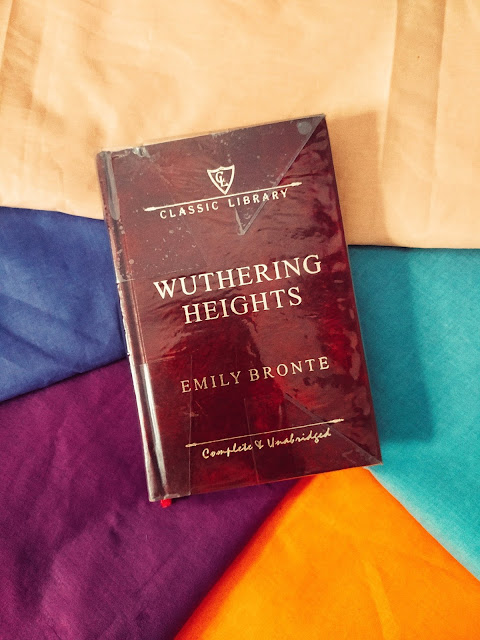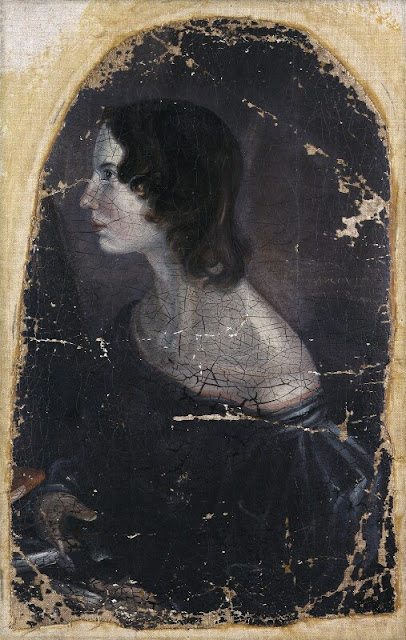Book Review
Wuthering Heights by Emily Brontë
 |
| Wuthering Heights by Emily Bronte |
Author: Emily Jane Brontë
ISBN: 8188280062
Genre: Tragedy and Gothic Fiction
Length: 343 Pages
Publication Date: 2002 (Originally: December 1847)
Publisher: Wilco Publishing House (Originally published by Thomas
Cautley Newby under the pseudonym – Ellis Bell)
Order your copy right now: https://amzn.to/3mcne5Q
The daughters of an Anglican clergyman, Charlotte, Emily, and Anne, lost
their mother in early childhood and were brought up in Yorkshire moors. All of
them wrote novels and poetry that have since become the Classics of today.
Charlotte's Jane Eyre' and Anne's 'Agnes Grey join the immortality status along
with Emily's 'Wuthering Heights', and her own great poems.
Emily (Jane) Bronte was perhaps the most prolific writer of the three.
It is her lucid verses however, which reveal her real genius.
In a stroke of misfortune for the literary world, the Bronte sisters lived
very short lives. Emily and Anne died of tuberculosis at 30 and 29, and
Charlotte at 39, during her pregnancy.
Emily's brilliance lives on – with her widely read poems, and of course, with her spellbinding: Wuthering Heights.
 |
| Emily Bronte |
Bronte Parsonage Museum: https://www.bronte.org.uk/
As you, my readers’ fam, may know that I generally do critical and
analytical reviews on my blog, divided into sections based on fundamental
literary elements like plot, characters, themes, setting, etc. However, I will
not be diving deep into these technicalities for this particular review,
because I am planning for yet another reading, focusing on a couple of specific
themes. So, without further ado, let’s see what I have been able to perceive so
far.
Wuthering Heights by Emily Bronte was part of my British Novel course,
for which I took an examination in February 2021. Although I wasn’t able to
read the novel, I had to study it for my exams as I had resolved to pick out Wuthering
Heights from amongst all the choices provided. That’s why I was equipped with
its summary, analysis, critical essays, and the like before I started reading
the novel. But thankfully, for the timeless and mysterious proses, impeccable
articulation emanating wildest imaginations, and its ability to transport you
to different time and space, as the classic texts often do, my prior knowledge
of the text did not even slightly affect my reading experience.
Wuthering Heights showed me myriad shades of human emotions and the destructive
consequences of our intense reactions to them. Every character from the novel,
at some point in time, seemed to me a villain; their villainy characterized by
antipathy, revenge, shifting identities, dishonesty, violence, ill-intensions,
etc across all plausible age groups. Having said that, at some point in the
novel, each character exuded raw, pure, intuitive, and wild feelings of love,
passion, and/or commiseration that I couldn’t keep myself from loving the
characters. Well, that’s about the primary theme of the novel, you could
consider, leading the narrators to comment on characters and their ways based
on their own understanding and commitments towards moral theology; drawing a
line between good and evil.
Another major concern that Wuthering Heights brings forth is the
presence of gothic elements. The reason that these gothic elements are so
naturally and conveniently accommodated in the book is the novel’s setting.
Wuthering Heights, as the title suggests, is set in the eerie and gloomy Yorkshire
moors and those two country houses/dwellings prevalent throughout the novel –
Wuthering Heights and Thrushcross Grange – completely isolated from the
surrounding villages. The tumultuous, violent, and raging weather that this
setting is often subjected to, symbolizes the dark and negative emotions of
characters; the emotions probably leading the characters to unconsciously
practice grotesque yet passionate yet unconsummated romance, necrophilia,
incest, cruelty, jealousy, revenge, and betrayal. Apart from these, the
mysterious, dark, and moody character of Heathcliff emerges as a gothic
villain. And his lover, the female protagonist, Catherine Earnshaw is a free
spirit, selfish and headstrong; her loyalties torn between two men – her
soulmate Heathcliff, and her husband Edgar Linton, who becomes to Catherine a
tool for preserving her social status.
The desire for power and social structure has a pronounced influence on
the characters of Wuthering Heights and become determining factors for the
course of action. The novel put greater emphasis on death, attaining higher and
spiritual levels of meaning and being. The lead characters defy even present
day morals and ethics; breaking the barriers of an average romance story; powerful
and supernatural romantic imagination cutting across the boundaries of heaven
and hell; a love story beyond comprehension, reason, civilization, and order, this
wildly creative novel seeks an alternative to the basic nature of everyday
reality.
Happy Reading!






Great review. This is one of my favourites as well
ReplyDeleteThank you! Nice to hear that...
Delete